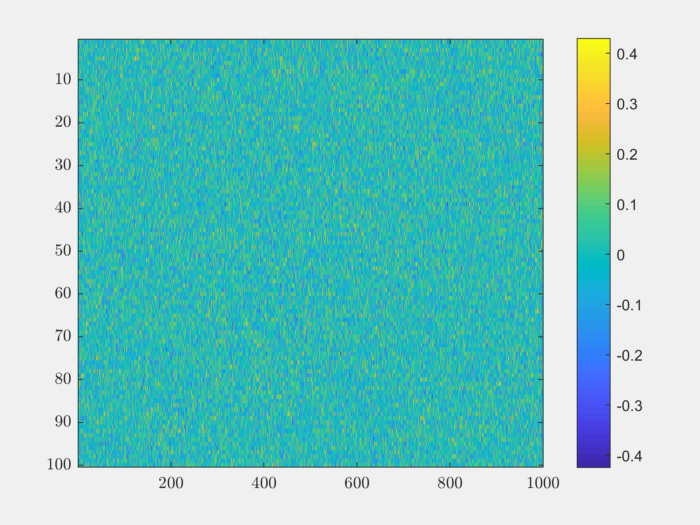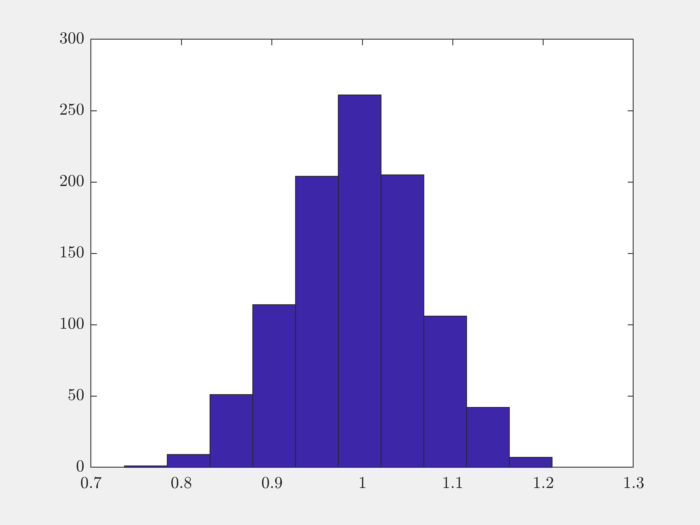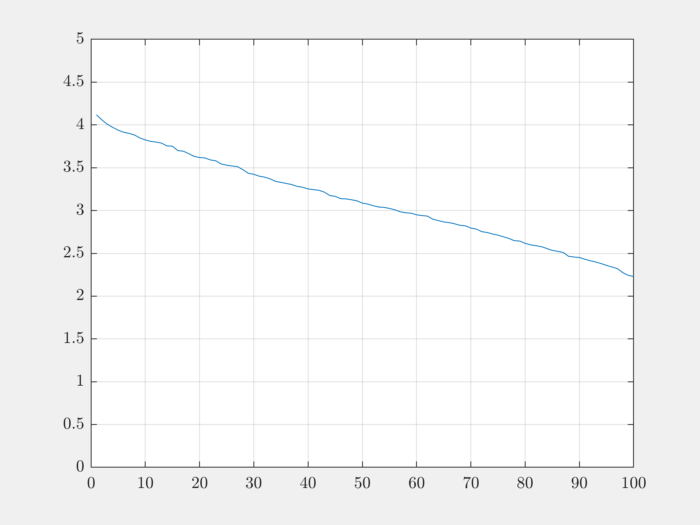Gaussian sensing matrices¶
In this section we collect several results related to Gaussian sensing matrices.
We note that
We can write
where \(\phi_j \in \RR^M\) is a Gaussian random vector with independent entries.
We note that
Thus the expected value of squared length of each of the columns in \(\Phi\) is \(1\) .
Joint correlation¶
Columns of \(\Phi\) satisfy a joint correlation property ([TG07]) which is described in following lemma.
Let \(\{u_k\}\) be a sequence of \(K\) vectors (where \(u_k \in \RR^M\) ) whose \(l_2\) norms do not exceed one. Independently choose \(z \in \RR^M\) to be a random vector with i.i.d. \(\Gaussian(0, \frac{1}{M})\) entries. Then
Let us call \(\gamma = \max_{k} | \langle z, u_k\rangle |\) .
We note that if for any \(u_k\) , \(\| u_k \|_2 <1\) and we increase the length of \(u_k\) by scaling it, then \(\gamma\) will not decrease and hence \(\PP(\gamma \leq \epsilon)\) will not increase. Thus if we prove the bound for vectors \(u_k\) with \(\| u_k\|_2 = 1 \Forall 1 \leq k \leq K\) , it will be applicable for all \(u_k\) whose \(l_2\) norms do not exceed one. Hence we will assume that \(\| u_k \|_2 = 1\) .
Now consider \(\langle z, u_k \rangle\) . Since \(z\) is a Gaussian random vector, hence \(\langle z, u_k \rangle\) is a Gaussian random variable. Since \(\| u_k \| =1\) hence
We recall a well known tail bound for Gaussian random variables which states that
Now the event
i.e. if any of the inner products (absolute value) is greater than \(\epsilon\) then the maximum is greater.
We recall Boole’s inequality which states that
Thus
This gives us
Hands on with Gaussian sensing matrices¶
We will show several examples of working with Gaussian sensing matrices through the sparse-plex library.
Let’s specify the size of representation space:
N = 1000;
Let’s specify the number of measurements:
M = 100;
Let’s construct the sensing matrix:
Phi = spx.dict.simple.gaussian_mtx(M, N, false);
By default the function gaussian_mtx constructs a matrix with normalized columns. When we set the third argument to false as in above, it constructs a matrix with unnormalized columns.
We can visualize the matrix easily:
imagesc(Phi);
colorbar;

Let’s compute the norms of each of the columns:
column_norms = spx.norm.norms_l2_cw(Phi);
Let’s look at the mean value:
>> mean(column_norms)
ans =
0.9942
We can see that the mean value is very close to unity as expected.
Let’s compute the standard deviation:
>> std(column_norms)
ans =
0.0726
As expected, the column norms are concentrated around its mean.
We can examine the variation in norm values by looking at the quantile values:
>> quantile(column_norms, [0.1, 0.25, 0.5, 0.75, 0.9])
ans =
0.8995 0.9477 0.9952 1.0427 1.0871
The histogram of column norms can help us visualize it better:
hist(column_norms);

The singular values of the matrix help us get deeper understanding of how well behaved the matrix is:
singular_values = svd(Phi);
figure;
plot(singular_values);
ylim([0, 5]);
grid;

As we can see, singular values decrease quite slowly.
The condition number captures the variation in singular values:
>> max(singular_values)
ans =
4.1177
>> min(singular_values)
ans =
2.2293
>> cond(Phi)
ans =
1.8471
The source code can be downloaded
here.